It was early in November that I began to suspect the batteries; the system just was not holding a charge the way it should. Of course that is more subjective intuition then pure logic, but lately my early morning coffee maker had begun tripping the power inverter (and that is very objective) necessitating a 5:30 AM trip into town every morning to get my coffee at Circle-K.
Perhaps it was the new 700 watt microwave pulling too much power the night before, or the new pond pumps that are timed to run all day, or the new desktop All-In-One, or something.
I bought a Ryobi power meter at Home Depot and took readings on the power consumption of nearly everything. The coffee maker was pulling almost 600 watts for roughly 5 minutes, but I had been using this Melitta for years, so this sudden cutoff of power was a new development. I ordered a 1500VA 900W Cyberpower UPS and plugged the coffee maker and my wife's hot water pot into it. That solved the coffee problem, but the microwave could still kill the early morning power. Even the compost toilet's fan/heater unit could challenge the system at about 245 watts. We learned to wait until the inverter's display shows at least 48V and 10A, an hour or so after the sun comes over the hill at about 9 AM, before running these things. Then everything would work just fine throughout the day.
The computer pulls up to 75 watts when awake, which is almost all the time, so I began unplugging its CyberPower 1500VA 900W UPS from the wall every morning until it was down to about 5 minutes of power remaining and then I would plug it back in and hope for the best - while constantly Saving whatever I was working on. The Crosley WCC10/E3 chest freezer (converted to a fridge with an external thermostat) would average about 100 watts when running but it was off most of the time. I began to unplug it in the morning anyhow. The wattage pull of the cameras and the pumps was negligible.
I was having to face the fact that the batteries needed replacing, a multi-thousand dollar hit on my card, which meant trying every other option first. They say "Do not replace one battery at a time; replace the whole batch". If I recall what I have read correctly, one defective battery can adversely affect the output of the entire bank of four, though not the other banks. So one defective battery makes the other three in its bank, effectively, just as defective. Over time, all batteries naturally deteriorate to some degree, so if you replace only one battery in a bank, the new one immediately drops to the level of the other three.
In 2007
I had installed only twelve batteries (as three 48V banks of four batteries). It was clear to me now that four banks would be needed - sixteen batteries, if just to compensate for some eventually going bad.
The four solar panels on the roof had no problem recharging the system quickly, even with some batteries obviously defective. On January 18 2010, four days of on and off rain began to descend on our valley. Even though the sun did manage to break through now and then, the power went out early on the 21st and did not return until noon the next day. Another four batteries would have kept the lights on a little longer.
|
|
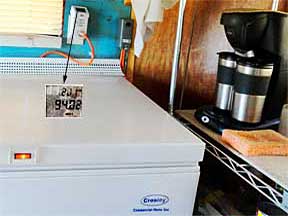
A Ryobi Power Meter measures wattage
of a Crosley chest fridge |
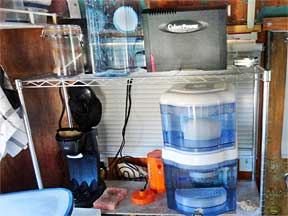
A UPS powers the coffee maker and kettle.
Also, that's a Zen Water Purication System. |
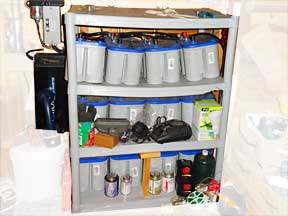
A battery shelf has cracked.
|
|
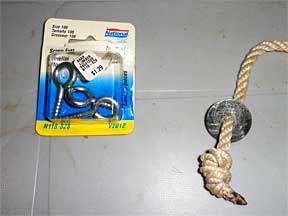
Preparing to quickly hang each battery to
remove the weight from the shelf |
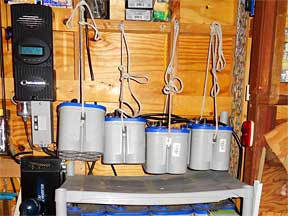
Without loosing power, each battery
is hung from a strong rope |
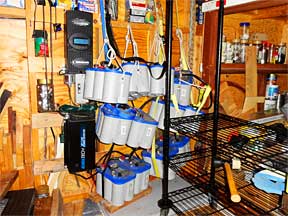
Ready to insert a new and strong shelving unit
|
|
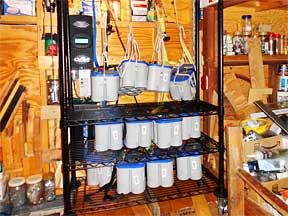
Each battery in turn is carefully placed on
the new shelf as its ropes are removed |
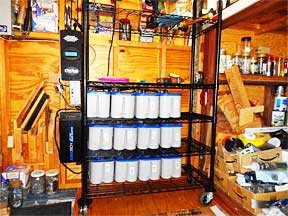
The 12 batteries rest on the new shelving
unit and all cables are made tight |
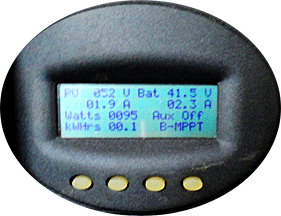
After an hour of direct sun the 48V battery
bank is still too weak at 41.5V |
|
15 months later I was gently moving the shelving unit a bit when the rear (thank god) left castor detached itself and the unit leaned against the wall. I quickly wedged a nearby pry bar under that corner and shoved some wood under its post.
|
|
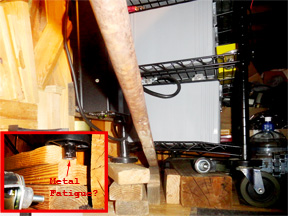 |
|
The 16 new batteries = 1008 lbs. Okay.
The shelving unit can carry 1750 lbs. Good.
The 4 in. industrial casters hold 600 lbs. Oops.
But it was the shelving steel that gave out!
Perhaps 4 piano rollers might work better.
|
|
|
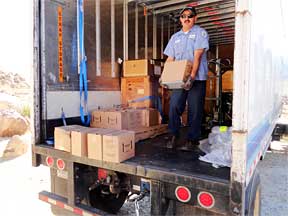
The 16 Deka AGM 12V Batteries ordered from
Backwoods Solar ($3632) arrive in 5 days |
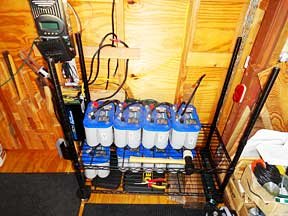
The old Opitma batteries are removed
|
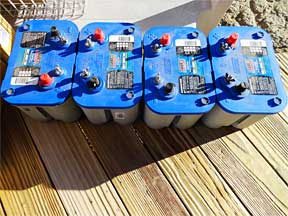
Some batteries did test weak after 5 years.
Autozone recycled them and gave me $25. |
|
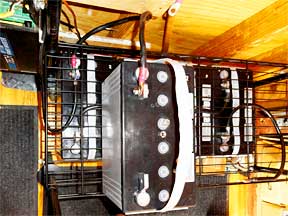
Installing the new B-DK-8A27
Deka AGM Batteries |
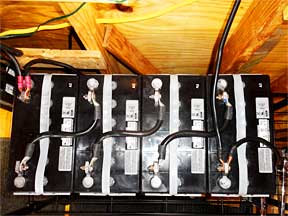 |
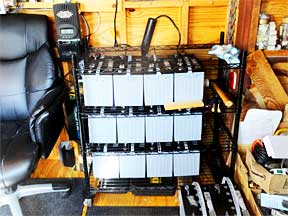
Twelve deep cycle batteries go live
as three parallel 48V banks |
|
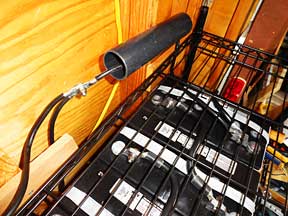
A PVC pipe temporarily shields a live battery
connection |
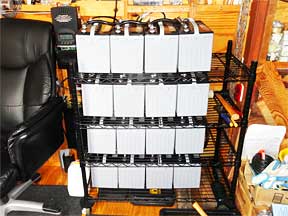
Four days later, sixteen batteries go live
as four parallel 48V banks |
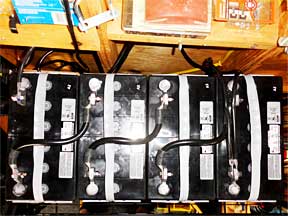 |
|
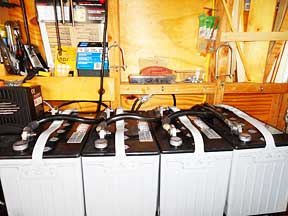 |
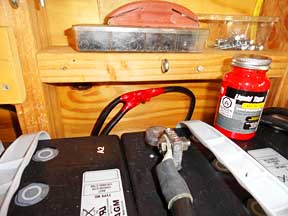
A live battery connection is permanently
sealed with Liquid Tape |
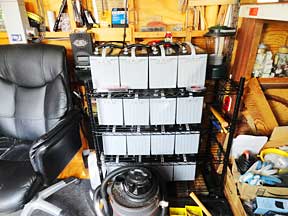 |
|
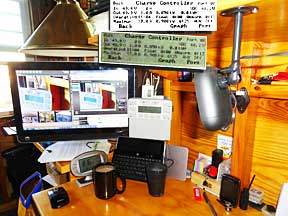
An OutBack MATE 3 & a RainAlert water meter
watched by a Logitech 700i & Blue Iris software |
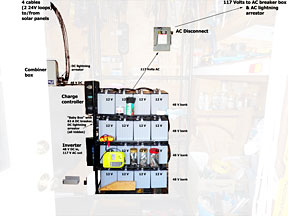
A solar system of batteries, charge controller
and inverter fed by solar panels on the roof |
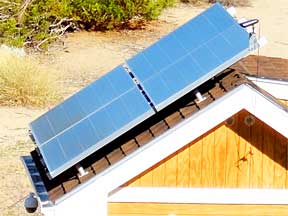
Four Sharp 216 watt solar panels installed five
years ago still look good |
|
|
